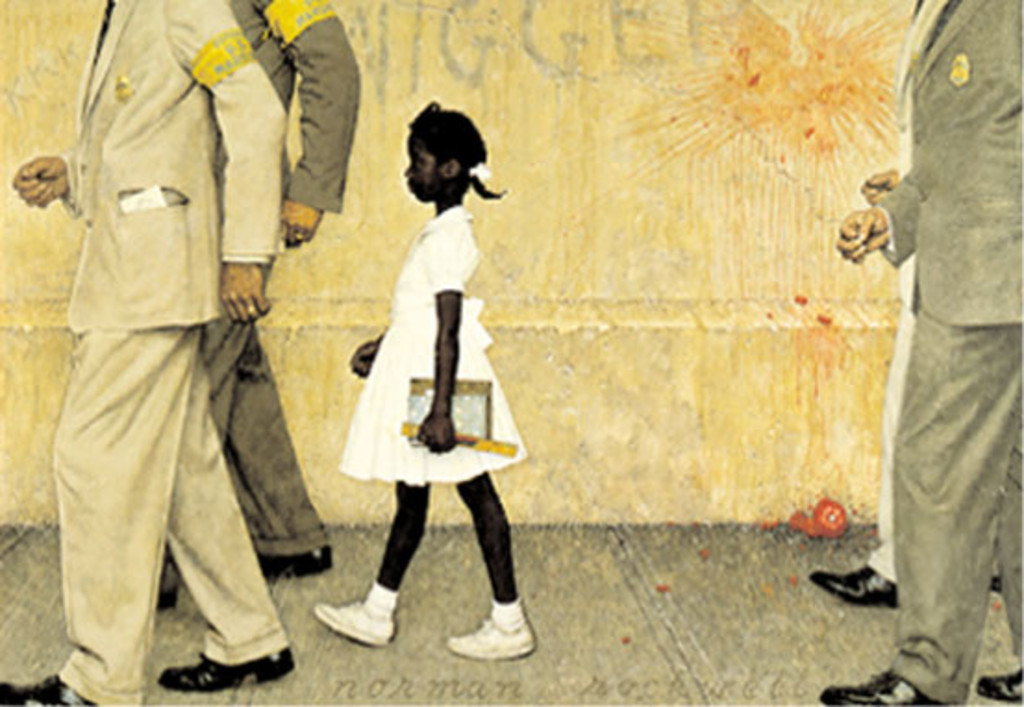
- the problem we all live with
Norman Rockwell told the story of the society he lived in throughout his paintings .
His favourite themes were family, music, childhool, home, old age... He rarely illustrated political or subjects like such as the fight for equality of civil rights and poverty.
This famous illustration, entitled THE PROBLEM WE ALL LIVE WITH is a denunciation of segregation.
It was published in the magazine Look in 1963, and it shows Ruby Bridges, a little african- american girl who is going to school under the protection of federal agents, in the period of the civil rights movements of the 60’s.
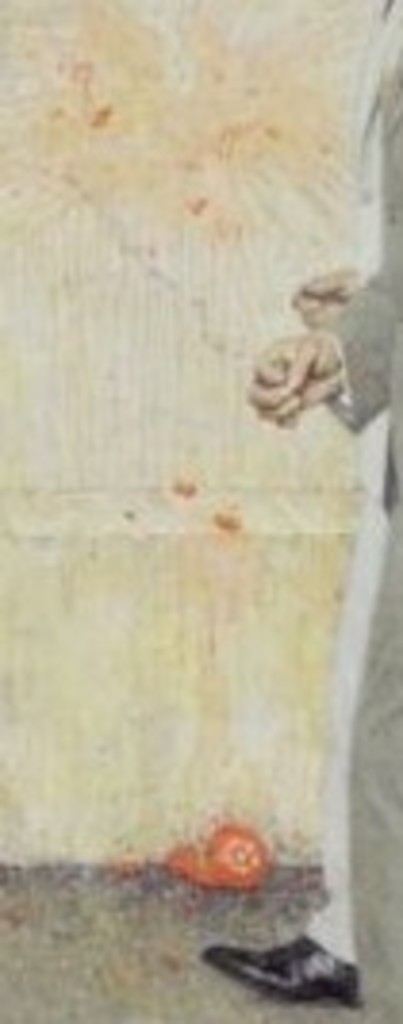
- tomato stains, like blood dripping from the wall
We see that a TOMATO was thrown at the little girl, and splattered on the wall and on the ground. It’s the only touch of red, and it evokes the blood of all the victims of racist crimes in America.
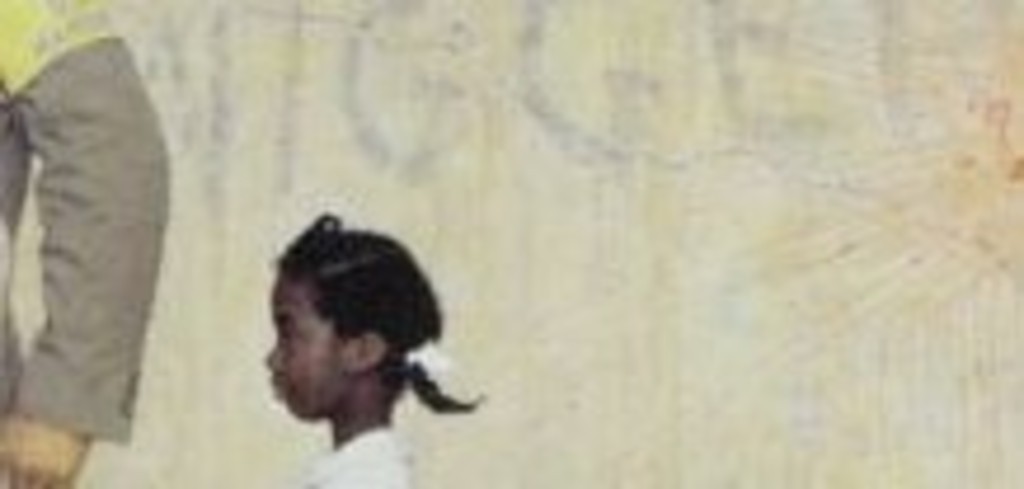
- the N- word, scrawled on the wall
We can also make out a half-erased word on the wall : the N- word, ("NIGGER"), which is the most offensive racist term that can be used to refer to an African-American. We can see that many white people didn’t accept black people in those days. A group of heinous women known as the « Cheerleaders », gathered in front of the school to yell insults at young Ruby Bridges, on the 14th of november 1960
The little girl wears a WHITE dress. She is proud to go to school, and looks very serious and determined , and probably frightened as well.
Her socks and her shoes are white too. White is the symbol of LIBERTY because she was the first girl who could go to a school for white people. White is the symbol of PEACE, and youthful innocence also. It’s a contrast because the society is not at peace with black people. She is surrounded by four agents, dressed in grey clothes. She is smaller than them and looks even smaller because we don’t see the heads of the FBI agents, as if they were giants too tall to fit inside the picture.
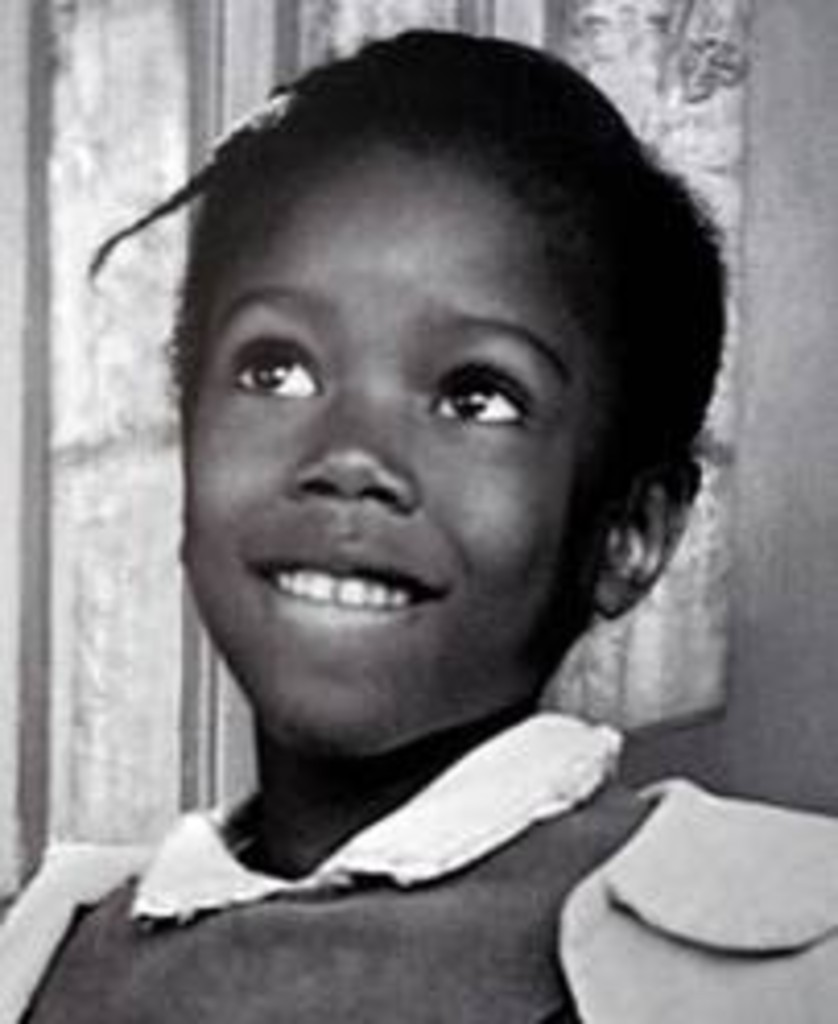
- Ruby Bridges, at the age of six
The girl, the tomato and the agent’s armbands stand out against the rest of the picture. They are the only COLOURS, the other colours are the grey and yellowish background wall. The four agents and the girl are in the same position. One of the agents holds in his hands the letter which says that she can go to a white school. They are symbols of EQUALITY.
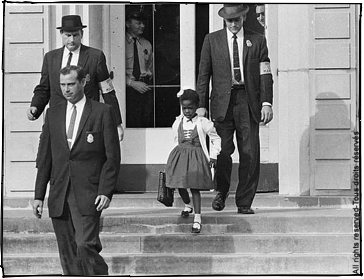
- Ruby and her bodyguards
The great writer John Steinbeck happened to be present when Ruby went to school flanked by her federal escort, and he heard the racists jokes that the " cheerleaders" screamed at the little girl.
This is his account of the event, in his book Travels with Charley :
“The show opened on time. Sound the sirens. Motorcycle cops. Then two big black cars filled with big men in blond felt hats pulled up in front of the school. The crowd seemed to hold its breath. Four big marshals got out of each car and from somewhere in the automobiles they extracted the littlest negro girl you ever saw, dressed in shining starchy white, with new white shoes on feet so little they were almost round. Her face and little legs were very black against the white.”

- racist women gathered to yell insults at Ruby
“The big marshals stood her on the curb and a jangle of jeering shrieks went up from behind the barricades. The little girl did not look at the howling crowd, but from the side the whites of her eyes showed like those of a frightened fawn. The men turned her around like a doll and then the strange procession moved up the broad walk toward the school, and the child was even more a mite because the men were so big. Then the girl made a curious hop, and I think I know what it was. I think in her whole life she had not gone ten steps without skipping, but now in the middle of her first step, the weight bore her down and her little round feet took measured, reluctant steps between the tall guards. Slowly they climbed the steps and entered the school.”
- Podcast et RSS
- Plan
- Mentions
- Rédaction
- Se connecter

-
2009-2024 © Lycée George-Sand La Châtre - Tous droits réservés
Ce site est géré sous SPIP 3.2.19 et utilise le squelette EVA-Web 4.2

Dernière mise à jour : lundi 24 janvier 2022


